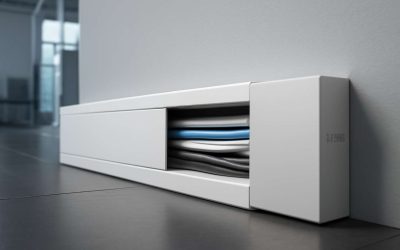
Cable ducting, also known as wire ducting or electrical cable ducting is used to run pipework and cables behind walls or in floor spaces without the need for patching and redecorating. This means that buildings can be utilised more quickly as well as creating a much cleaner and safer work environment. This is a particularly important consideration in industrial settings where avoiding running cables through floors and walls can be a safety issue as well as being expensive and disruptive.
There are several types of cable ducting available but each is designed with a specific purpose in mind and the best type will depend on the individual requirements for the application. For example, there are ducts for electrical wires that have additional insulation to protect against fire risks and others that are designed for use with water or gas pipes. In each case the ducting will have different features to prevent damage or a build up of mud and other debris that could cause a failure in the system or lead to a dangerous situation for anyone coming across it.
One of the most common types of cable ducting is a corrugated type that has been designed to reduce surface friction with the passing cables. This works by the peaks of the spiral ribs being positioned along the inner wall of the tube. The duct then passes the cable over these peaks which reduces the amount of force needed to install the cables and increases the length of cable that can be installed within the duct before damage occurs. Previously, ducts that were smooth or longitudinally ribbed had a tendency to damage the cable sheath and this was often only discovered at a later date when it would be necessary to replace the damaged cable.
Other types of cable ducting include armored ducting that has a metal sheath that provides extra protection for the cables that are being carried and also offers the advantage of being easy to cut should it be necessary. There are also composite ducting systems that combine the properties of both corrugated and smooth ducts to give a system that is both cost effective and highly flexible.
Before installing any cable ducting it is important to remember that all underground utilities should be turned off and the area checked for gas, water and electricity pipes and cables. This is a crucial step that should not be skipped as it could lead to an expensive and stressful repair bill in the event of a failure.
Once the utility services have been switched off and the area is safe to dig, a trench that is the appropriate size for your cable/pipe should be dug. Ensure that this is free of any sharp rocks or other obstructions that might puncture the ducting when it is laid. A bed of 50mm sand in the trench can also be placed to sit the ducting on and this will help further protect it.



0 Comments